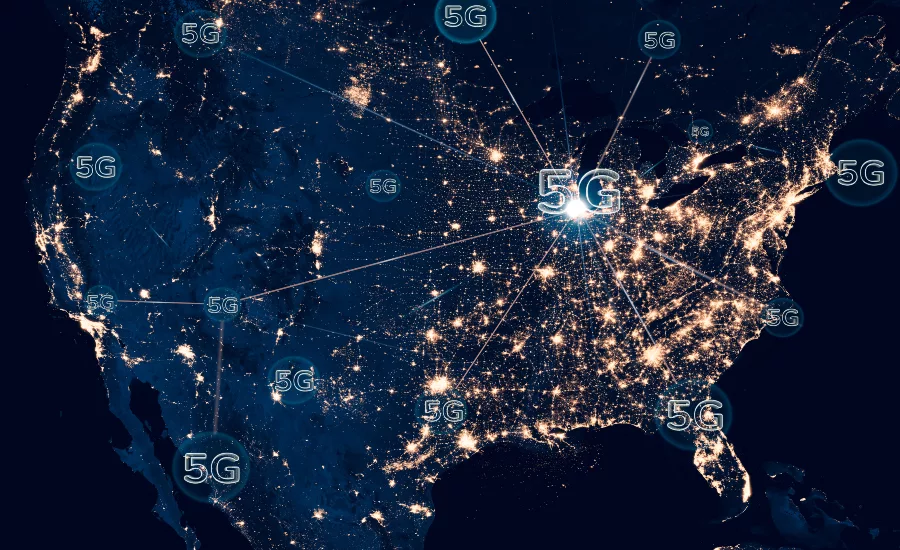Securing 5G cloud infrastructures

The National Security Agency (NSA) and the Cybersecurity and Infrastructure Security Agency (CISA) have published the first of a four-part series, Security Guidance for 5G Cloud Infrastructures.
This guidance has been created by the Critical Infrastructure Partnership Advisory Council (CIPAC) Cross-Sector Enduring Security Framework Working Group — a public-private working group that provides cybersecurity guidance addressing high-priority cyber threats to the nation’s critical infrastructure. The approach supports the May 2021 Presidential Executive Order on Improving the Nation’s Cybersecurity.
The guidance is the result of a 5G Cloud Working Panel established by the Enduring Security Framework. The panel engages with experts across government and industry to document 5G cloud security challenges, threats, and potential mitigations, including guidance, standards, and analytics. The collaboration resulted in a four-part series of publications that addresses a three-pronged approach, applying a threat-based approach to identify and mitigate risks in 5G networks that derive from cloud technologies and providing mitigations that can be applied to harden 5G cloud infrastructures.
5G networks, which are cloud-native, are a lucrative target for threat actors who wish to deny or degrade network resources or compromise information, says the guidance. To counter this threat, 5G cloud infrastructures must be built and configured with security in mind, with capabilities in place that detect and respond to threats, providing a hardened environment for deploying secure network functions.
Although all 5G network stakeholders can benefit from this guidance, the recommendations are intended for service providers and system integrators that build and configure 5G cloud infrastructures, including core network equipment vendors, cloud service providers, integrators, and mobile network operations. The audience for each set of recommendations is identified throughout the series, providing a layered approach to building hardened 5G cloud deployments.
Security Guidance for 5G Cloud Infrastructures – Part I: Prevent and Detect Lateral Movement focuses on detecting malicious cyber actor activity in 5G clouds and preventing actors from leveraging the compromise of a single cloud resource to compromise the entire network. It also provides recommendations for mitigating lateral movement attempts by threat actors who have gained initial access to cloud infrastructures.
For cloud providers and mobile network operations, the guidance provides the following mitigations:
- 5G networks should assign unique identities to all elements (preferably to each interface) that will communicate to other factors in the 5G network.
- Before allowing access to a resource (e.g., Application Programming Interface (API), Command Line Interface (CLI)), each network element should authenticate and authorize the entity requesting access.
- Where possible, identities should be assigned using Public Key Infrastructure X.509 certificates from a trusted certificate authority (CA) rather than username/password combinations5.
- If username/passwords must be used, multi-factor authentication (MFA) should be enabled to reduce the risk of compromise.
- The 5G network should provide automated mechanisms for credential management, especially as these features become more readily integrated into modern cloud environments (e.g., certificate rotation via a Service Mesh).
- Where possible, use certificate pinning or public key pinning to provide additional identity assurance when authentication is dependent upon multiple CAs. Certificate pinning and public key pinning associate a host with an expected certificate, reducing a compromised CA's impact.
- All-access to resources should be logged. Each log entry should contain the time, resource, requesting entity (name or service), information about the requesting entity’s location (region, IP address), and result of the access request (allow, deny). Logs should be protected as described in Part III: Protect Data in Transit, In-Use, and the rest of this series.
- Analytics for detecting potentially malicious resource access attempts should be deployed and run regularly.
In Part II: Securely Isolate Network Resources, the following topics will be addressed:
- Enabling isolation of Kubernetes Pod resources, such as limiting capabilities and permissions on deployed containers.
- Cryptographically isolating critical containers from infrastructure/hosts using trusted execution environments.
- Applying good container security hygiene to avoid resource contention and Denial of Service attacks.
- Implementing real-time threat detection and incident response by minimizing noise, curating baseline behavior, and alerting anomalous activity.
For more mitigations and guidance, please visit https://media.defense.gov/2021/Oct/28/2002881720/-1/-1/0/SECURITY_GUIDANCE_FOR_5G_CLOUD_INFRASTRUCTURES_PART_I_20211028.PDF.
Looking for a reprint of this article?
From high-res PDFs to custom plaques, order your copy today!






